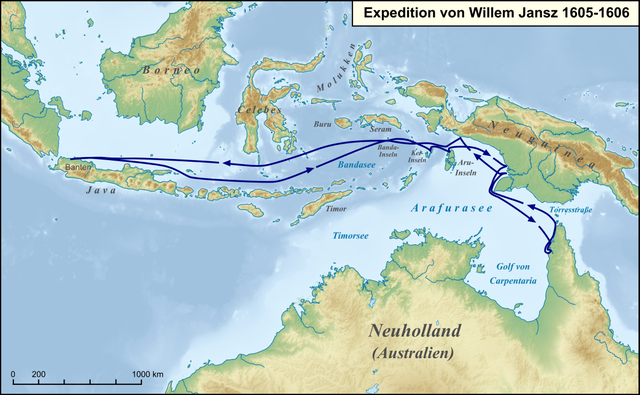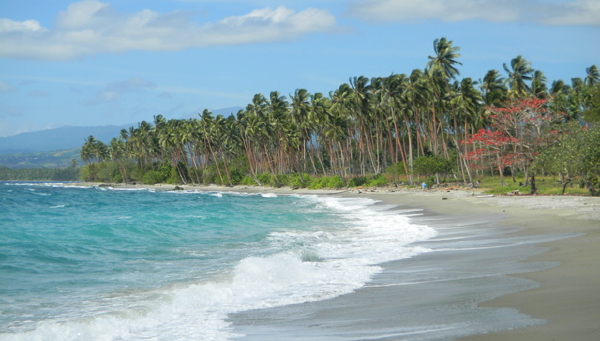The expedition of Juan Fernández
The life of Juan Fernández was an exciting one. Born in Cartagena, Murcia between 1528 and 1530. Being born in the major port of Castile in the Mediterranean he promptly grew an interest in sailing. He was promoted to captain and major pilot sometime in the 1550's and in the 1560's he was sent to the Vicerotalty of Peru, where he was destined to the Captaincy General of Chile to serve as a member of the navy along with Juan Jufré and Hernando de Lamero. Fernández's first success was the discovery of a route that avoided the Humboldt Current in 1574, shortening the time needed to sail from Lima to Valparaíso from six months to thirty days, being unofficially nicknamed as "The wizard of the Pacific" after this. By that time his collegue Juan Jufré had conquered the region of Cuyo (westernmost central Argentina), assuring it for the Captaincy General of Chile under the rule of Melchor Bravo de Saravia.
However his discoveries would not stop there. While in a talk with Jufré, he proposed him to send an expedition to some islands that he discovered during his trip from Lima to Valparaíso (named Juan Fernández islands after him), however Fernández was far more interested in the theoretical Terra Australis Incognita, a landmass that supposedly existed to counterbalance the unequal distribution of the continents in both hemispheres. Jufré supported him and talked with the Captain General of Chile, which agreed to support him. However the Viceroy of Peru, Francisco Álvarez de Toledo refused to find an expedition there and only allowed the expedition to reach the Juan Fernández Islands. Fernández and Saravia secretely kept funding an expedition to sail further beyond the islands without the consent of the Viceroy.

Portait of Juan Jufré, sadly there is none of Juan Fernández
The expedition set sail around late February 1576 and by April, after a single month of travel using southern currents, Juan Fernández reached an island of considerable proportions, that he described as "mountainous, fertile, with strong-flowing rivers, inhabited by white peoples, and with all the fruits necessary to live". His interest grew and decided to try to surround it and check if it was truly the Southern Continent or just an island slightly bigger than those he sighted in Polynesia. He surrounded the entire North Island of New Zealand and while doing so he contacted the native maoris (or Maoríes in Spanish) and traded some goods with them, proving that natives were more advanced than those sighted in other islands or even in some areas America proper. The island he found turned out to be huge, in fact, bigger than the whole of Polynesia put together, and he sighted another island which seemed as big as the North Island right south of it. The natives called the island Aotearoa, which the Spanish deformed into Ateroa, and claimed it for the Spanish crown.
Fernández set sail back to Chile in August 1576 with a reasonably well-made map of the island and how to reach it. When he came back he met with the new governor, Rodrigo de Quiroga and Jufré, with the latter initially refusing to publish the discovery out of fear for reprisals coming from Peru as the expedition was not allowed by the Viceroy. Fernández showed him some of the items he took from the island. He accepted to publish it, but not before the Viceroy of Peru was quietly informed of the discovery. Fernández announced the discovery and the viceroy ordered him to go to Lima for an audience with him. In the talks, the viceroy stated no interest in the island, even with the gifts Fernández brought to him. However during his time in Lima he gained the confidence of some nobles, including that of Martín Enríquez de Almanza, which was promoted to Viceroy after de Toledo's death in 1581.
De Almanza agreed to finance an expedition and to fund a colony in the island while Juan Jufré, who had died in 1578 in Santiago expressed many times his intentions to support Fernández, and thus he reserved a part of his fortune to lend it to him should a second expedition happen. Fernández agreed to incorporate whatever he discovered to the Viceroyalty of Peru, but due to the alleged sheer distance he would be granted the tittle of Captain General and ownerships of the territory subject to the Viceroy and the King. The expedition set sail sometime around March and April 1582, and it reached the island in July. Fernández and his expedition sailed northwards until they found a bay [1] which could be suitable for a colony. He landed there with 50 colonists and 120 indians and named the colony as Medina de Ateroa [2], after Jufré's home town, Medina de Rioseco.
The colony thrived as the climate allowed for crops to grow normally and the native maoris were initially receptive to trade, even if relations deteriorated as time passed. In November, Fernández sent a ship back to Lima stating that the colony had been successfully founded and the location could be suitable for a permanent presence. The Viceroy of Peru died in 1583 before he had news of the expedition and was succeded temporarily by Cristóbal Ramírez de Cartagena, a member of the Audiencia which proved very supportive of Fernández's expedition. He was quickly replaced by a new Viceroy, Fernando Torres de Portugal y Mesía, another of Fernández's friends in Lima which sent an expedition in 1586 to stablish permanent contact with Fernández's colony, which had reached a total population of 150 people (initial deaths had stopped and it had started to grow again sometime around 1585). The expedition also brought needed materials and 30 furhter Indians to assist in the expansion of the colony.
The Spanish had effectively assured a grip on a new territory, the real magnitude of which they only started to imagine.
From now on the TL will be more general, as the colonisation progress is rather slow and the POD doesn't really affect much of the world until some decades to a century pass. Next update will focus in other Spanish expeditions in Oceania.
[1] OTL Plenty Bay
[2] OTL Tauranga
However his discoveries would not stop there. While in a talk with Jufré, he proposed him to send an expedition to some islands that he discovered during his trip from Lima to Valparaíso (named Juan Fernández islands after him), however Fernández was far more interested in the theoretical Terra Australis Incognita, a landmass that supposedly existed to counterbalance the unequal distribution of the continents in both hemispheres. Jufré supported him and talked with the Captain General of Chile, which agreed to support him. However the Viceroy of Peru, Francisco Álvarez de Toledo refused to find an expedition there and only allowed the expedition to reach the Juan Fernández Islands. Fernández and Saravia secretely kept funding an expedition to sail further beyond the islands without the consent of the Viceroy.

Portait of Juan Jufré, sadly there is none of Juan Fernández
The expedition set sail around late February 1576 and by April, after a single month of travel using southern currents, Juan Fernández reached an island of considerable proportions, that he described as "mountainous, fertile, with strong-flowing rivers, inhabited by white peoples, and with all the fruits necessary to live". His interest grew and decided to try to surround it and check if it was truly the Southern Continent or just an island slightly bigger than those he sighted in Polynesia. He surrounded the entire North Island of New Zealand and while doing so he contacted the native maoris (or Maoríes in Spanish) and traded some goods with them, proving that natives were more advanced than those sighted in other islands or even in some areas America proper. The island he found turned out to be huge, in fact, bigger than the whole of Polynesia put together, and he sighted another island which seemed as big as the North Island right south of it. The natives called the island Aotearoa, which the Spanish deformed into Ateroa, and claimed it for the Spanish crown.
Fernández set sail back to Chile in August 1576 with a reasonably well-made map of the island and how to reach it. When he came back he met with the new governor, Rodrigo de Quiroga and Jufré, with the latter initially refusing to publish the discovery out of fear for reprisals coming from Peru as the expedition was not allowed by the Viceroy. Fernández showed him some of the items he took from the island. He accepted to publish it, but not before the Viceroy of Peru was quietly informed of the discovery. Fernández announced the discovery and the viceroy ordered him to go to Lima for an audience with him. In the talks, the viceroy stated no interest in the island, even with the gifts Fernández brought to him. However during his time in Lima he gained the confidence of some nobles, including that of Martín Enríquez de Almanza, which was promoted to Viceroy after de Toledo's death in 1581.
De Almanza agreed to finance an expedition and to fund a colony in the island while Juan Jufré, who had died in 1578 in Santiago expressed many times his intentions to support Fernández, and thus he reserved a part of his fortune to lend it to him should a second expedition happen. Fernández agreed to incorporate whatever he discovered to the Viceroyalty of Peru, but due to the alleged sheer distance he would be granted the tittle of Captain General and ownerships of the territory subject to the Viceroy and the King. The expedition set sail sometime around March and April 1582, and it reached the island in July. Fernández and his expedition sailed northwards until they found a bay [1] which could be suitable for a colony. He landed there with 50 colonists and 120 indians and named the colony as Medina de Ateroa [2], after Jufré's home town, Medina de Rioseco.
The colony thrived as the climate allowed for crops to grow normally and the native maoris were initially receptive to trade, even if relations deteriorated as time passed. In November, Fernández sent a ship back to Lima stating that the colony had been successfully founded and the location could be suitable for a permanent presence. The Viceroy of Peru died in 1583 before he had news of the expedition and was succeded temporarily by Cristóbal Ramírez de Cartagena, a member of the Audiencia which proved very supportive of Fernández's expedition. He was quickly replaced by a new Viceroy, Fernando Torres de Portugal y Mesía, another of Fernández's friends in Lima which sent an expedition in 1586 to stablish permanent contact with Fernández's colony, which had reached a total population of 150 people (initial deaths had stopped and it had started to grow again sometime around 1585). The expedition also brought needed materials and 30 furhter Indians to assist in the expansion of the colony.
The Spanish had effectively assured a grip on a new territory, the real magnitude of which they only started to imagine.
From now on the TL will be more general, as the colonisation progress is rather slow and the POD doesn't really affect much of the world until some decades to a century pass. Next update will focus in other Spanish expeditions in Oceania.
[1] OTL Plenty Bay
[2] OTL Tauranga




